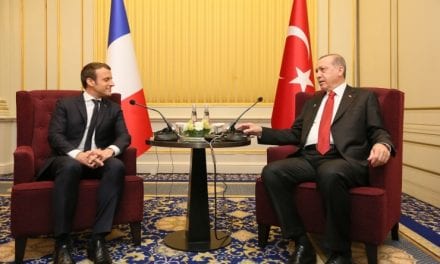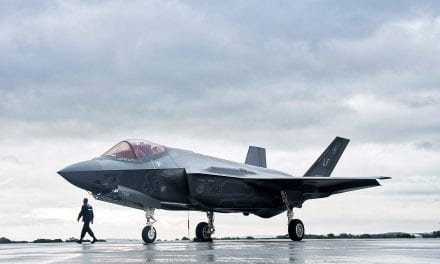Fortunately, the worst is hardly inevitable. But avoiding it will require deference to energy economics (which, in the Middle East, favor nonnuclear over nuclear forms of energy) and promoting rules against enriching uranium and reprocessing spent reactor fuel (the keys to nuclear weapons development).
Iran could get a bomb within a year. We already know it worked on a 10-kiloton bomb design. As for enriching weapons-grade uranium, Tehran could likely revamp its existing fleet of centrifuges to produce enough for its first bomb in eight to 10 months.
Then, there is the unspoken option of culling plutonium from spent fuel generated from its power reactor at Bushehr. Assuming Iran currently lacks a small, crude chemical separation plant (which could be hidden within a moderate sized warehouse), Tehran could build one from scratch in as little as six months. (The design for such a plant was made public 40 years ago.) Such a plant could process one bomb’s worth of plutonium in about a week and a bomb’s worth per day after that. Given Tehran’s past work on weapons design, it’s reasonable to assume that Iran would have a working implosion device on the ready and could prepare plutonium or highly enriched uranium to place into the device’s core relatively quickly.
Recent analysis also shows that even if Iran used “reactor-grade plutonium” from its power reactor at Bushehr, it could produce a compact 9- to 12-kiloton weapon, (which would accord with Iran’s earlier effort to perfect a 10-kiloton missile warhead) ) using 1950s weapons technology. If Iran unloaded Bushehr’s fuel before it was fully burned, as it did in 2012, it could build even more powerful weapons still.
Tehran, though, is unlikely to sprint toward such bomb options if for no other reason than that Trump has warned it against doing so; the mullahs know that a rush to build a bomb could lead to U.S. military strikes. Iran also would like to keep China, Russia, Britain, and the European Union on its good side. Getting a bomb or rushing to build one would risk all this.
Iranian nuclear or military provocations could prompt Riyadh to develop a nuclear weapons capability as a hedge.
Indeed, Saudi Crown Prince Mohammed bin Salman and Foreign Minister Adel al-Jubeir both are on record saying that if Iran acquires a nuclear weapons capability, Saudi Arabia will do whatever it takes to “do the same.” This could mean a number of things.
Riyadh could call on China, which sold the Saudis nuclear-capable missiles, or Pakistan, whose bomb program the Saudis funded, to base their nuclear weapons on Saudi soil. China and Pakistan could do this legally under the Nuclear Nonproliferation Treaty so long as the nuclear weapons remained under Chinese or Pakistani control.
The Saudis, however, would surely prefer to maintain control themselves, which gives rise to the possibility of China or Pakistan helping Riyadh acquire the means to enrich its own uranium. This could be done by sharing information that would allow the Saudis to get the parts and plans needed to complete a plant of their own.
Based on an analysis of past centrifuge enrichment programs, the Saudis might perfect a plant in one to three years and produce their first bomb’s worth of uranium a year or so later at a cost of only tens of millions of dollars. As for perfecting a nuclear weapons design, this would likely be accomplished in parallel as has been done in nearly every other bomb program.
Alternatively, Riyadh might buy a 1,000-megawatt reactor from one of the major nuclear suppliers — the Korea Electric Power Corporation, Westinghouse, EDF, Rosatom, or China — bring it online; build a crude, small reprocessing plant; and separate plutonium from the reactor’s spent fuel. Judging from the recent nuclear experience of the United Arab Emirates, completing a large power reactor might take roughly a decade. If the Saudis made good on their promise to build a smaller South Korean-designed 100-megawatt electrical power reactor and decided to construct a small reprocessing plant, Riyadh could conceivably have its first batch of plutonium for use in weapons in as little as five years.
The worry, then, would be that others might follow. Egypt has long operated a large Argentine-designed research reactor capable of producing more than a bomb’s worth of plutonium each year and has tinkered with reprocessing. Both Turkey and Egypt have begun construction of several large, Russian-built VVER pressurized-water reactors. Turkey is also developing a series of indigenous nuclear-capable ballistic missiles.
If Egypt develops a weapons option, some fear that its traditional rival, Algeria, would then play catch-up. For decades, Algiers has operated a large research reactor that has generated tons of spent reactor fuel containing what could potentially be many bombs’ worth of plutonium. It also has hot cells — small labs that allow the safe handling of radioactive materials, which can be used to separate plutonium from the other hot spent reactor fuel waste products.
Finally, there’s Israel, which already has an estimated nuclear arsenal of 100 to more than 300 warheads. Its production reactor near Dimona has been operated to produce tritium to keep the yield of Israel’s weapons boosted (tritium has a half-life of 12.3 years, so the weapons periodically must be “topped off”) and plutonium to fuel its nuclear weapons. It also operates centrifuges to enrich uranium for its nuclear weapons program. The Dimona reactor is more than a half-century old, but Israel hopes to operate it for another two decades.
The Middle East is a darkening nuclear neighborhood. Nonetheless, any pitched regional nuclear rivalry is several years away and can be avoided.
First, apart from Iran’s Bushehr plant, there are no power reactors yet operating in the Middle East, and without them, it’s difficult to justify enriching or reprocessing. Turkey’s massive Russian project is slouching ahead but just lost 49 percent of its financing. Japan financially pulled out of Turkey’s other planned nuclear project.
Meanwhile, Egypt’s planned Russian plant near Dabaa won’t be cheap: Cairo will have to shell out many billions of dollars to repay the Russians. Given Egypt’s economic woes, the plant may never be built. Finally, there’s Saudi Arabia, which optimistically announced it might spend more than $80 billion building reactors by 2040. Riyadh, however, will have difficulty balancing its current budget unless the price of oil reaches and stays at or above $85 to $87 a barrel. It has already drawn heavily from its financial reserves and is having difficulty selling shares of its key asset, the state-owned oil giant Saudi Aramco. The pace of Saudi nuclearization may be slow.
Second, nuclear power in the region is increasingly uneconomic. All of these countries have access to growing reserves of cheap natural gas and renewable energy sources, the costs of which are declining dramatically in the region.
These include wind and solar power, which, along with other renewables, provide power 24/7 at rates lower than nuclear. Meanwhile, as poor as the economic case for nuclear power may be in the Middle East, the financial case for enriching uranium or reprocessing spent fuel is weaker still.
Fears that these dangerous nuclear activities could be used to make nuclear weapons is why Washington initially refused the UAE civilian nuclear assistance in 2009 until it abandoned enriching and reprocessing. Trump officials have wisely intimated that similar demands may be holding up Riyadh’s signature on a U.S.-Saudi nuclear cooperation deal. The White House and Congress should hold firm on these demands, as well as the renewal of U.S. civilian nuclear cooperation with Egypt (up for renewal in 2021) and Turkey (up for renewal in 2023).
These demands also should feature, as Secretary Pompeo has made clear, in any future deal with Iran — getting Tehran to forswear enriching and reprocessing as the UAE did. Israel ought to be encouraged to adopt them as well. Finally, Washington needs to work with others to promote nonnuclear energy cooperation wherever it makes economic sense rather than continue to push nuclear energy in countries where it doesn’t.
This may seem ambitious — but the stark alternative in the Middle East is chaos.
Henry Sokolski is executive director of the Nonproliferation Policy Education Center and the author of Underestimated: Our Not So Peaceful Nuclear Future. He served as deputy for nonproliferation policy in the office of the U.S. secretary of defense from 1989 to 1993.


















